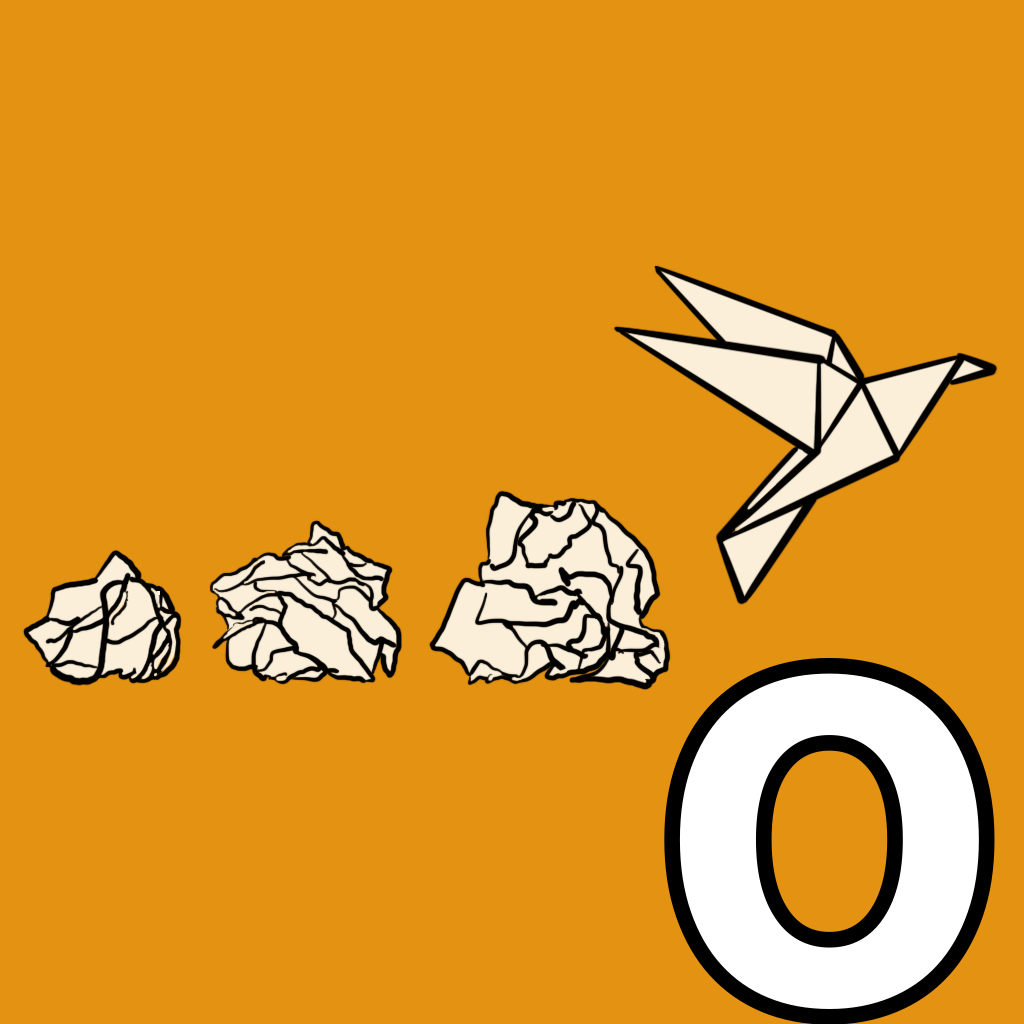ILLUSTRATION
When I think of the word oops, I’m less likely to think of apologies than mistakes. A more satisfying response to making an error is to grow from it, rather than express regret. With that in mind, I communicated a vision of oops as a few crumpled attempts that eventually result in successful origami.
INSPIRATION
Oops—it’s such a fun word! The onomatopoeia-like interjection brings levity to disappointment. My connotation of oops differs from the official dictionary definition because I associate the word with mistakes.
Mistakes can be seen as accidents (oops!). Bob Ross even referred to them as “happy accidents.” While accidents lack intention, mistakes exist in the space between an intention to act and what we intended an outcome to be. Mistakes are proof that you’re trying, that you’re taking risks, and that you’re open to change. You are not your mistakes but your mistakes make you.
Not all mistakes offer the same benefits. In my research, I came across this matrix:
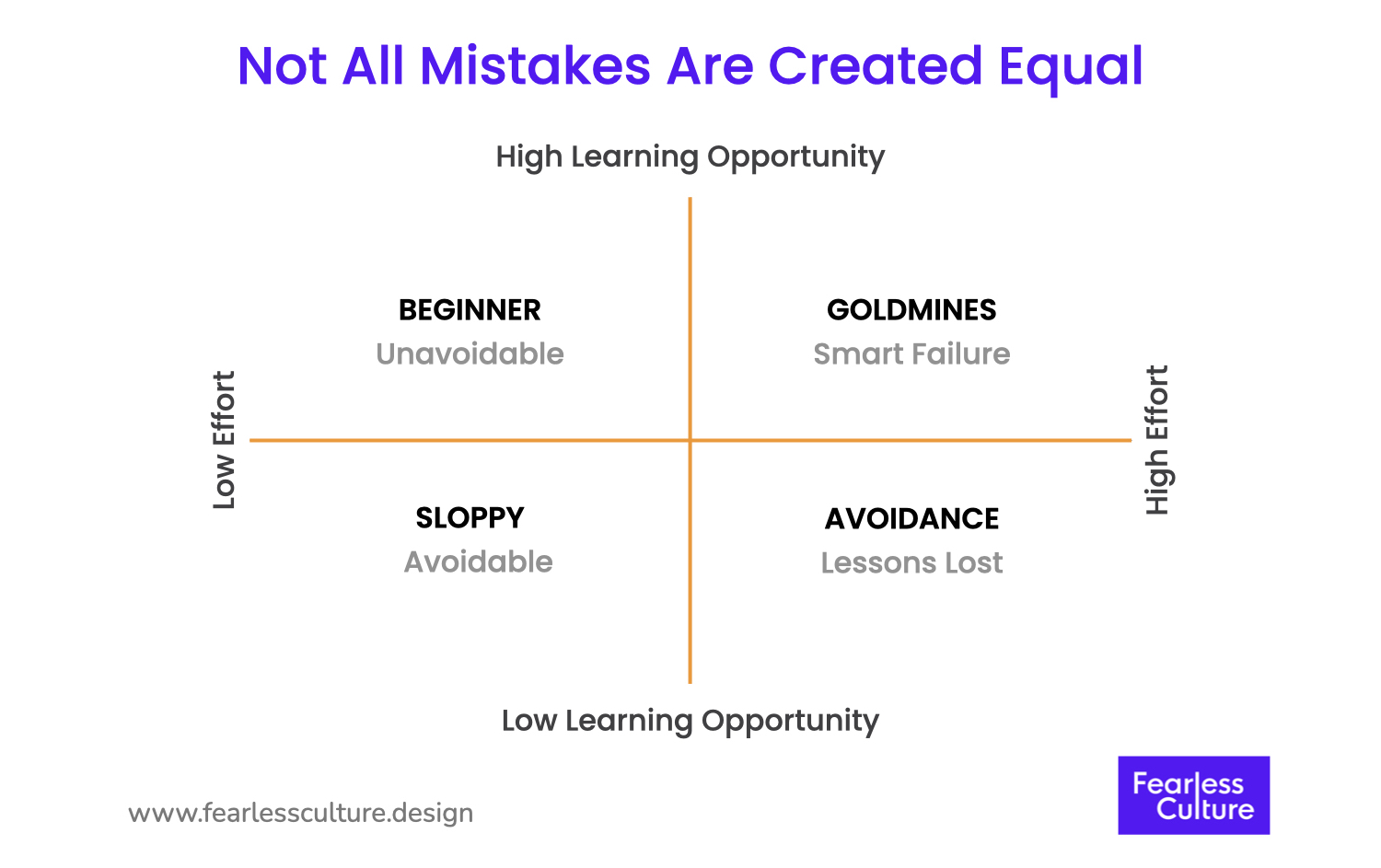
In the accompanying Fearless Culture blog post, Gustavo Razzetti shares how clients are often looking to develop a “fast fast, fail often” mindset. The problem is that mantra lacks nuance around making errors vs learning from them, sloppy mistakes vs goldmine mistakes. Further, I’d say it ignores who can be invited to make mistakes and who must remain fearful of failure.
Like many of us, I have a complicated relationship with mistakes and failure. At times I embrace failure for learning but sometimes I find myself failing to learn. Sometimes I don’t risk enough and I’m rewarded in kind.
While I could explore this topic in a number of interesting and personal ways, I decided to do something more pragmatic.
CREATION
CRACK! I looked down at the small breakfast plate and saw it was no longer in one piece. I had been separating two pieces of frozen sourdough with a butter knife to make toast. After a reflexive expletive, I admired the beautiful damage. The plate separated into two symmetrical-sized but asymmetrical shapes.
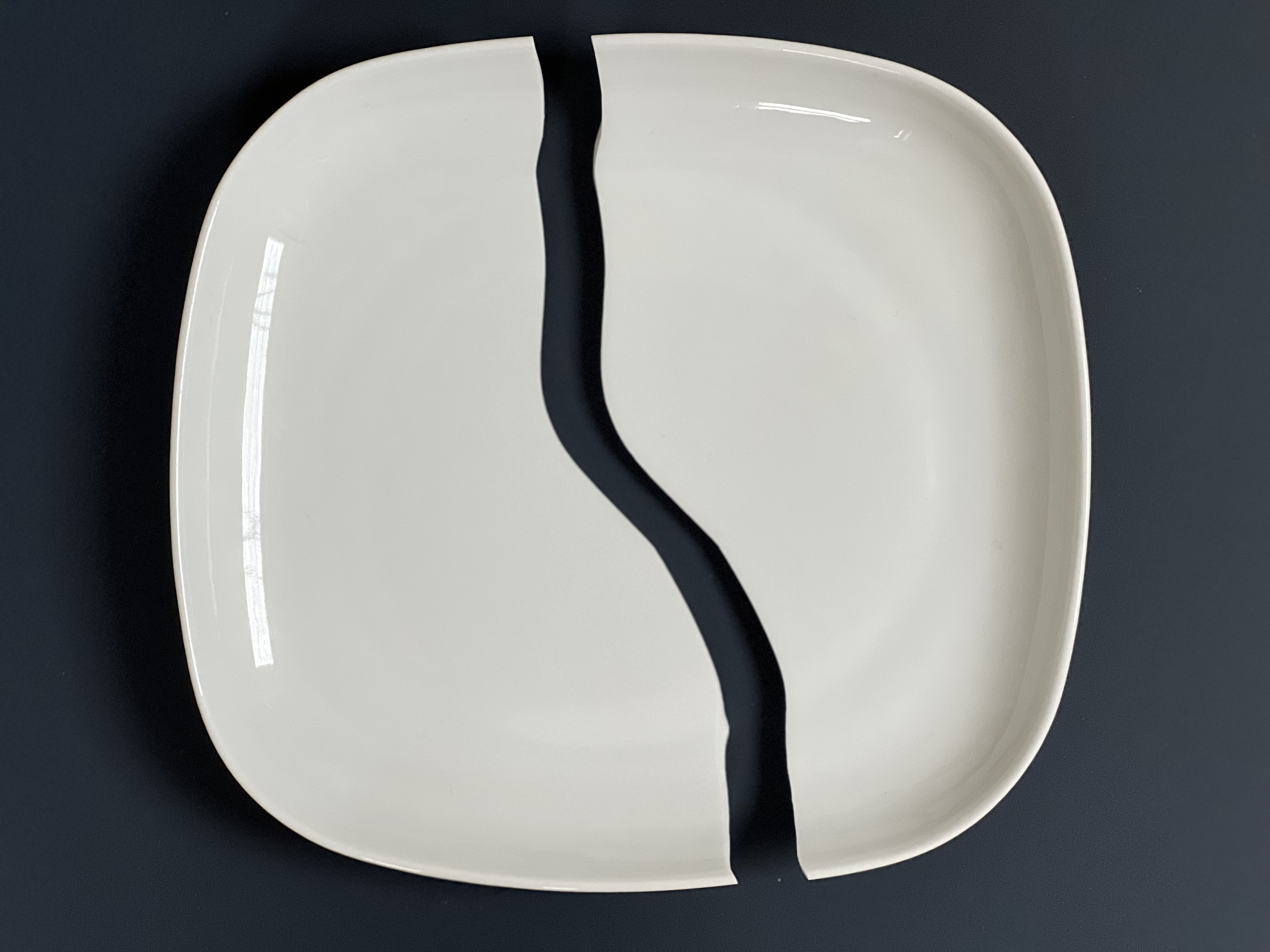
I posted a snapshot to my Creative Quest WhatsApp group and asked for ideas on what paints I might use to create art out of this incident. Sam immediately suggested I consider Kintsugi. YŌNOBI’s blog covers the concept well:
Kintsugi ("golden joinery"), also known as Kintsukuroi ("golden repair"), is the Japanese art of repairing broken pottery by mending the areas of breakage with lacquer dusted or mixed with powdered gold, silver, or platinum…The Kintsugi technique treats breakage and repair as part of the history of an object, rather than something to disguise…As a philosophy, kintsugi can be seen to have similarities to the Japanese philosophy of wabi-sabi, an embracing of the flawed or imperfect.
Several months passed until I was reminded of the repair technique for this project. I found Kintsugi kits online for about $40 but decided to buy only what I needed à la carte.
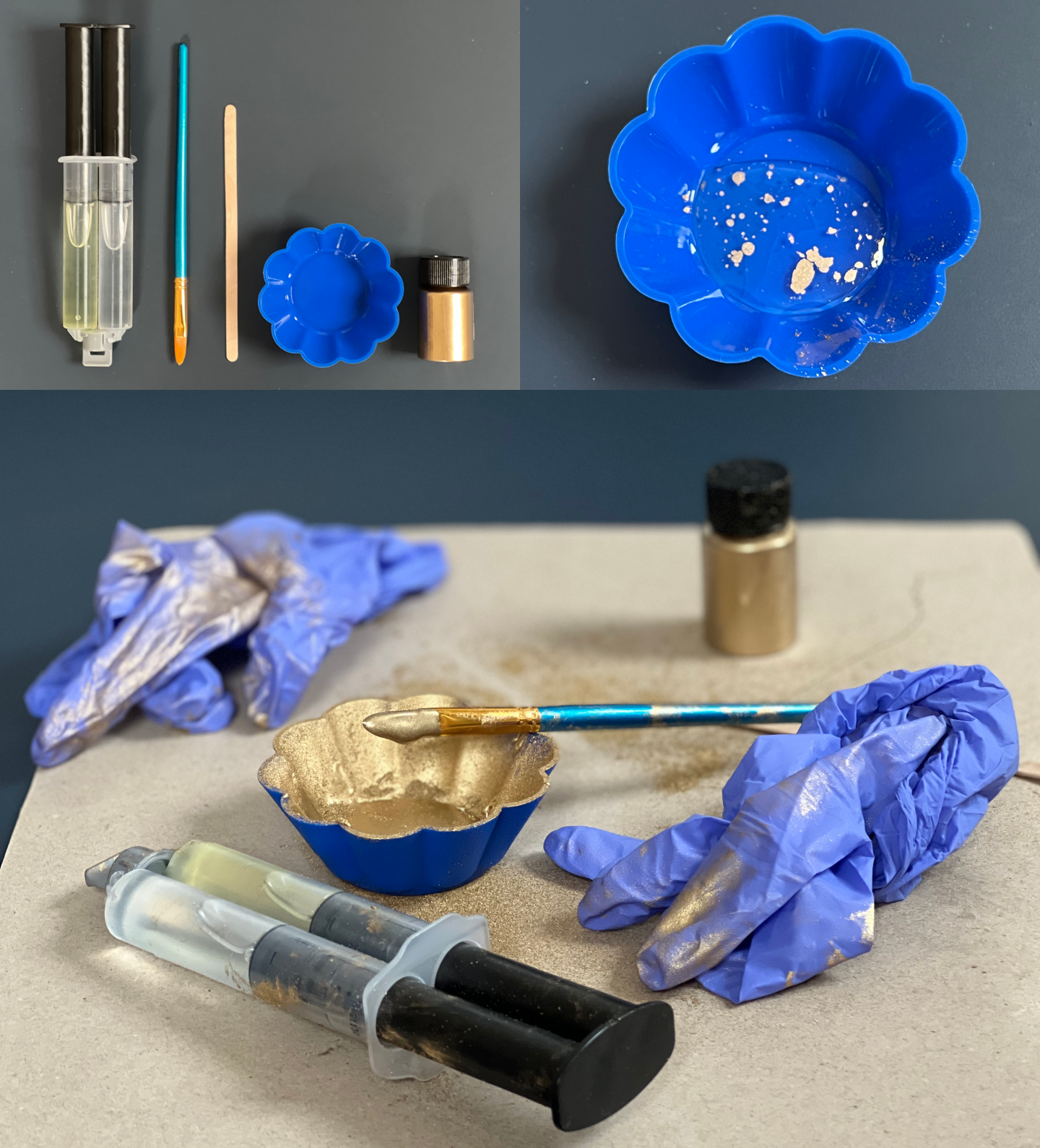
I opted for a traditional antique gold powder that I mixed into a small amount of the epoxy resin, painted along the broken edge, and held the pieces together for the required 4 minutes. In 24 hours, my breakfast dinnerware would be transformed into a ceramic catchall tray for our keys, rings, and things.
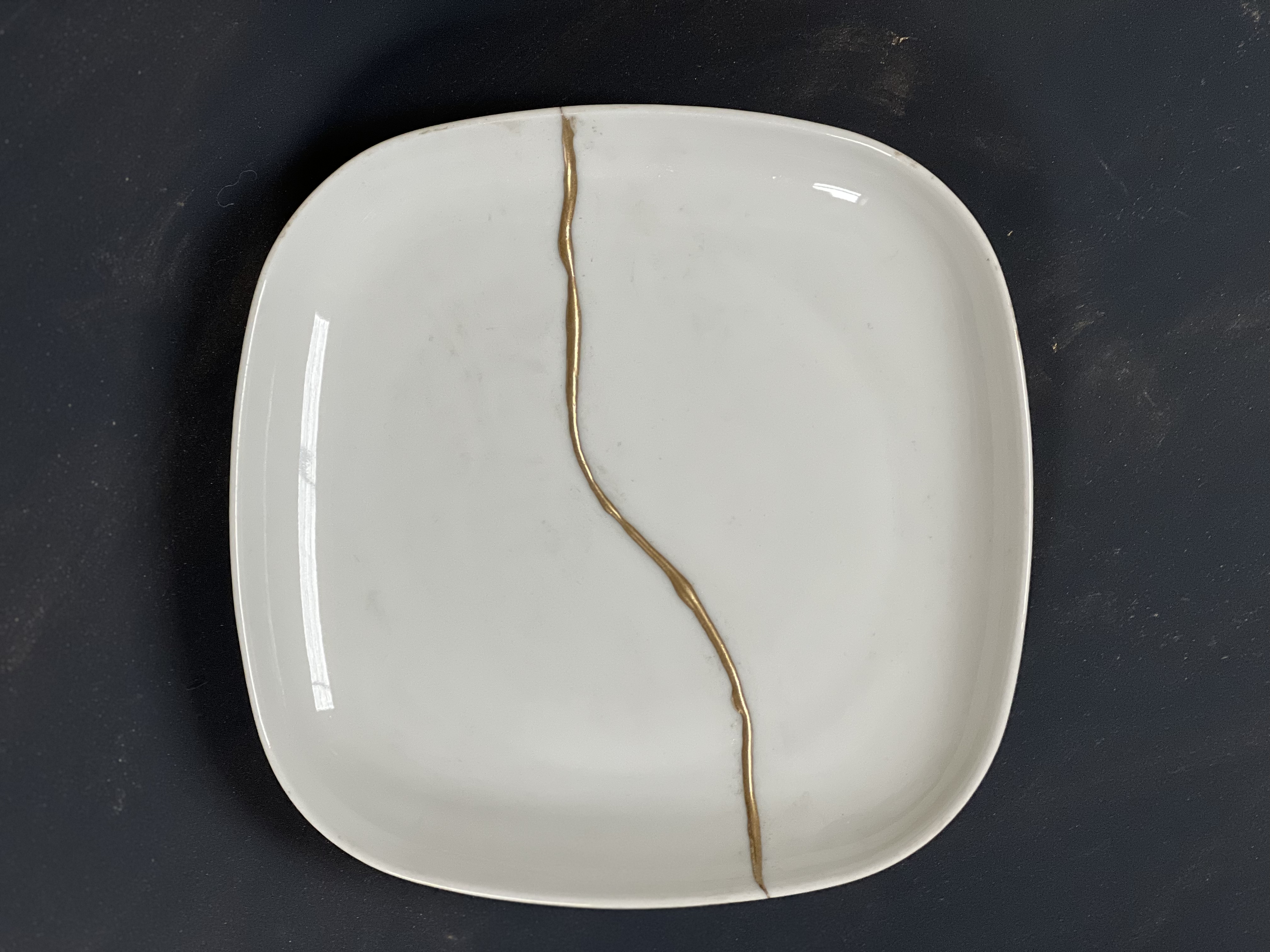
REFLECTION
It’s interesting think about what’s the equivalent of Kintsugi beyond pottery repair. Patching and darning repair fabrics and knits in a similar way. Perhaps apologies are the invisible Kintsukuroi of relationships.
CONNECTION(S)
For curated links and other content I couldn't fit into this post, subscribe to the email newsletter.
